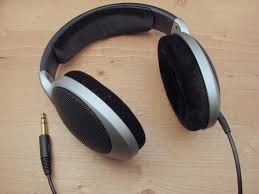Overview
Quick Navigation
You’ve always wondered how to repair the echo in your headsets. After all, by echoing all that goes into it, even a newly purchased headphone will start driving you nuts. If you’re using your headsets to listen to and build beats or trying to have a zoom meeting, the echoing audio is difficult to get around. Echoing happens mostly because of the speakers’ reverberation of the audio. It may also be activated by a low-quality headset or if the headset is close to the speaker. Also, some settings may be out of control on the system you are connected to, and it causes the audio to reverberate.
Each headset has its special settings, so finding a way to fix each pair of headsets you own can be extremely difficult. You’ve probably read few posts already, which none have a definitive response. Luckily, I’ve found methods that suit most devices through my study and years of experience as an audiophile. So your quest is over if you read about everything you see online about solving the echo problem in your headsets. I’ll show you how to eliminate an echo in your headsets in all kinds of cases.
What is an Echo?
An echo is just a repetition of a sound most times. It arrives after the real sound.
When the sound wave hits a hard surface, they reflect. Echo is mostly noises since they are not pleasant to the ear, and they can be annoying. The delay in sound is proportional to the distance from the hard surface, e.g., wall and the listener of the sound itself. Echo in the greet mythology is a cursed mountain, leaving her with the only option to repeat the words spoken to her.
First Step
Still, at odd moments, we do not understand why technology fails us and goes haywire. When that occurs, turning it off and back on is the most straightforward and most reasonable choice. So you need to: Unplug your headsets and plug them around to get rid of the echo. The port itself is often the problem, so try plugging your computer into another one if you can.
Second Step
Most time, the problem is with the system you are attaching your headsets to. Even if your headsets do not come along with a mic, they will probably adhere to the factory-made one of your machines (or phone). However, the audio is also not picked up as clearly by this mic and creates a reverberation in your headphone. Again, you should try troubleshooting the audio settings if you’re using a Personal Computer. Choose a pair of headsets supplied with a microphone. When you are using your phone or computer to speak to several people, this problem is pervasive. Luckily, when you’re on a conference call, there are ways you can make your headsets stop echoing.
Echo While on Conference Call
First, you’ll need to decide who’s causing the problem, you, the software you’re using, or other callers. If you’re the only one who can hear the noise because of your equipment, that means the problem is happening. Furthermore, if anyone except you can listen to the echo, the issue is, again, at your end. In both cases, you can use all the strategies I have listed so far. If someone on the call can hear the echo, however, you’ll have to go about stuff differently.
You could try troubleshooting it with the help of this YouTube tutorial if you’re using zoom. You might also order everyone to remain silent and wait for an indication to show you where the noise is coming from. If it turns out that the issue is not your end, you can also ask others to take the steps I have listed above. If you can ever hear an echo in your headset after all of your efforts, you can use these two additional ways to get rid of it.
Move your microphone to a different location
Repositioning it will help eliminate unnecessary noise if you’re using a standalone microphone. It’s helpful to consider the way your microphone gathers audio before doing this. Usually, microphones fall into two kinds of polar patterns: The first kind are unidirectional (cardioids). Unidirectional microphones pick up audios that come directly from the front of the microphone.
The second kind is the bidirectional microphones. Bidirectional microphones pick up audios in both directions at either the front or back.
With this in mind, you should pick a more optimal location for your microphone so that your speakers, a fan, or any other equipment that can emit some form of noise is not directly facing it.
Others’ Speakers
Not even your microphone triggers the most comfortable and most likely source of an echo. If the people you talk to have their microphones and receive your voice through headsets, their microphones will pick up the audio and relay it back to you from their speakers. A simple test is to ask your friends to turn their speakers off momentarily. If the speakers of your friends are causing the issue, suggest that they step further away from the speakers, reduce their volume, or instead use headsets.
Conclusion
Echo has a damaging effect on headphones if you don’t know, and they can spoil a good headphone if they continue for so long. That’s why I developed this article to serve as a set of instructions for getting rid of an echo in the headsets when I need to.
In this post, please let me know about new techniques to go about this and if you find this material very useful. Please make sure you share it with your relatives, work colleagues, parents, teachers, and anyone you interact with daily. For those of us who deal with audio daily, pristine quality is essential. Getting good audio quality improves the atmosphere and makes it more fun even when it comes to the things we do for leisure, such as playing games and listening to music.

